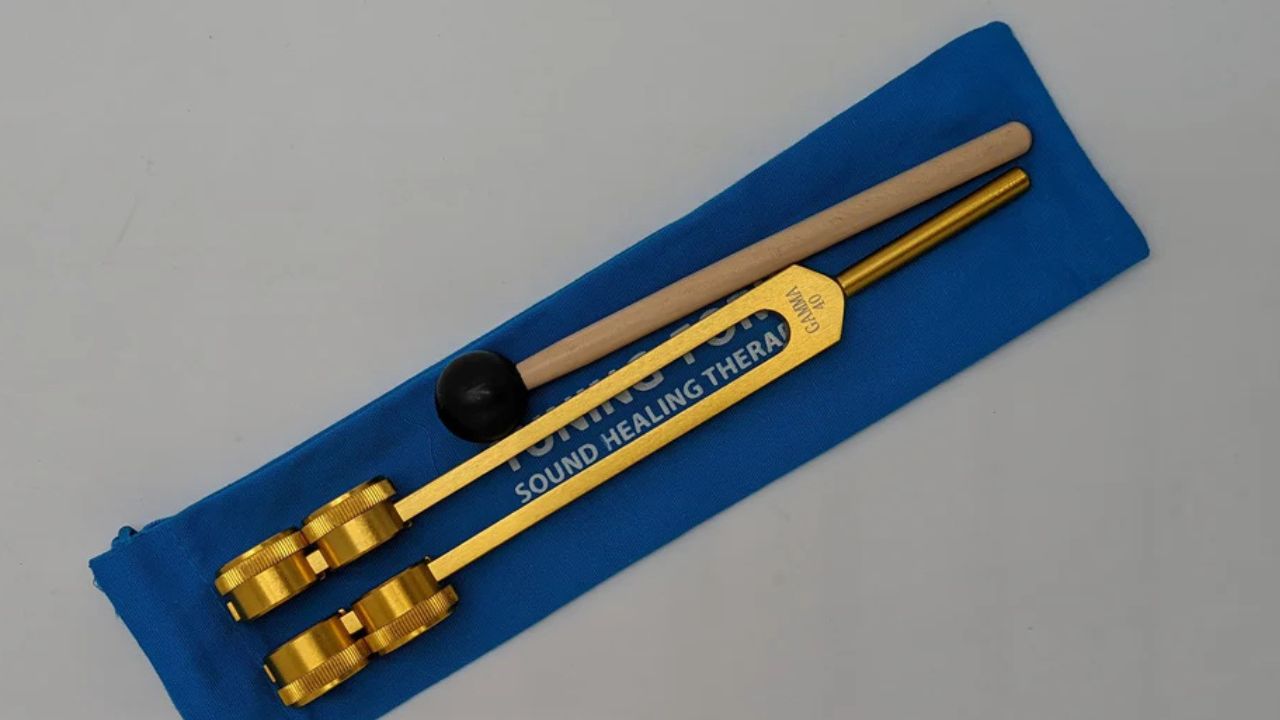The Kundalini tuning fork is a powerful tool used in sound healing and energy work, specifically designed to activate and align the body’s energy centers, or chakras. By emitting specific frequencies, this tuning fork helps practitioners facilitate deep relaxation, emotional release, and spiritual awakening.
Its vibrations resonate with the Kundalini energy, often described as a dormant force coiled at the base of the spine. What is the purpose of the Kundalini tuning fork? It serves to harmonize the body’s energy field, promoting holistic well-being and heightened consciousness.
Also Read: What Are Chakra Tuning Forks & What Are The Benefits?
What Is The Purpose Of The Kundalini Tuning Fork?

The Kundalini tuning fork is used primarily in sound healing and energy work. Its purpose is to help balance and align the body's energy centers, or chakras, particularly in relation to Kundalini energy, which is believed to be a dormant spiritual energy located at the base of the spine.
When struck, the tuning fork produces specific frequencies that can resonate with the body’s energy fields, promoting relaxation, releasing blockages, and enhancing overall well-being.
Practitioners often use it to facilitate meditation, deepen spiritual practice, and support personal transformation by encouraging the flow of energy throughout the body.
Also Read: Set Of 9 Weight Color Solfeggio Tunning Forks: Overview In 2024
History Of Kundalini Tuning Forks

Kundalini tuning forks are deeply rooted in ancient healing practices that beautifully blend sound therapy with spiritual traditions. The concept of Kundalini comes from Hindu philosophy, symbolizing the dormant energy coiled at the base of the spine, often linked to profound spiritual awakening.
The use of tuning forks in healing has its origins in the early 20th century, when pioneering sound therapists and holistic practitioners began to explore the transformative power of vibrational sound.
They recognized how specific frequencies could influence both physical and emotional well-being. By the late 20th century, the use of tuning forks became increasingly popular in New Age and holistic wellness circles, as more people sought ways to harmonize their energies.
Practitioners started to identify the unique frequencies that resonate with different chakras, helping to facilitate energy flow and promote healing.
Kundalini tuning forks, carefully calibrated to align with Kundalini energy, emerged as essential tools for meditation, spiritual growth, and holistic healing. Today, they’re embraced in various wellness practices, merging ancient wisdom with modern sound therapy techniques to foster personal transformation and balance.
What Does A Kundalini Tuning Fork Do To The Body?

A Kundalini tuning fork is a special tool that produces sound vibrations to help our body and mind. Here’s how it works:
Energy Alignment: The vibrations help balance our energy centers, called chakras, so that energy flows smoothly throughout our body.
Relaxation: The calming sounds can help us relax deeply, reducing feelings of stress and anxiety.
Emotional Release: The vibrations can help us let go of emotional blockages, leading to better emotional health.
Heightened Awareness: Using the tuning fork can increase our mindfulness, making it easier to connect with ourselves and our spiritual side.
Physical Healing: Some people find that the sounds can help relieve physical pain and relax their muscles.
Meditative States: The sound can enhance meditation, helping us reach deeper, more peaceful states of mind that support spiritual growth.
Difference Between Tunning Forks And Kundalini Tuning Forks
Tuning forks and Kundalini tuning forks both use sound vibrations, but they serve different purposes and are used in different contexts. Here’s a breakdown of their differences:
Tuning Forks:
- General Use: Tuning forks are commonly used in music to tune instruments and help musicians find the correct pitch.
- Frequency Range: They typically produce specific pitches, often at standard frequencies like 440 Hz (A above middle C).
- Applications: Primarily used in musical contexts, education, and sometimes in physical therapy for assessing hearing or as a tool for sound therapy.
- Focus: The focus is mainly on sound accuracy and musical application.
Kundalini Tuning Forks:
- Specific Purpose: Kundalini tuning forks are designed specifically for energy healing and spiritual practices, aimed at balancing chakras and enhancing meditation.
- Frequency Range: They produce specific frequencies believed to resonate with the body's energy centers (chakras), often linked to healing and spiritual growth.
- Applications: Used in holistic health practices, sound therapy, and spiritual healing sessions.
- Focus: The emphasis is on emotional and energetic well-being, promoting relaxation and spiritual awareness.
Conclusion
The purpose of the Kundalini tuning fork is to facilitate healing and promote overall well-being by using sound vibrations that resonate with the body's energy centers, or chakras. These unique tools are designed to help align energy, induce relaxation, and support emotional release, making them valuable in spiritual practices and holistic health.
By enhancing mindfulness and deepening meditation, Kundalini tuning forks can lead to greater self-awareness and personal growth. Ultimately, they serve as a bridge to connect individuals with their inner selves, fostering a holistic approach to physical, emotional, and spiritual health. What is the purpose of the Kundalini tuning fork? It is to enhance our connection to ourselves and support our journey toward balance and healing.





Leave a comment
This site is protected by hCaptcha and the hCaptcha Privacy Policy and Terms of Service apply.